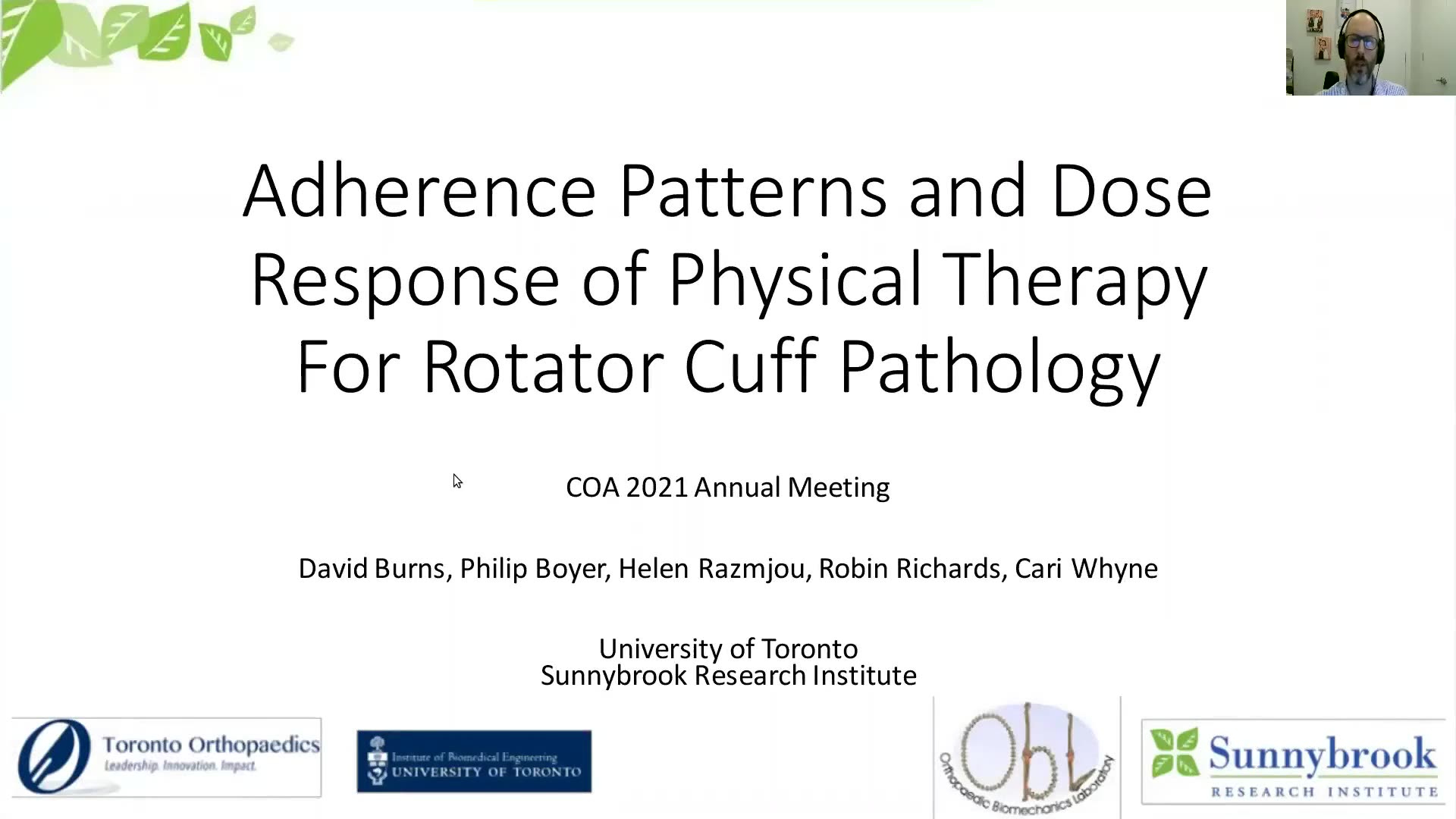Please login to view this media

- Talk
- 15/09/2021
- Canada
Adherence Patterns and Dose Response of Physical Therapy for Rotator Cuff Pathology
Description
This presentation, led by David Burns, an Orthopedic Surgery Resident at the University of Toronto, delves into the topic of "Adherence Patterns and Dose Response of Physical Therapy for Rotator Cuff Pathology." It outlines the importance of physical therapy in treating rotator cuff injuries, emphasizing that patient compliance with home exercises can significantly impact recovery outcomes. The research aims to quantify adherence rates and identify potential barriers to effective participation in physical therapy.
Burns discusses a prospective longitudinal cohort study involving 120 patients diagnosed with unilateral rotator cuff pathology. The study assesses adherence to a structured rehabilitation protocol involving evidence-based exercises, where patients' physical activity is tracked using inertial sensors on custom smartwatches. With an impressive 95% accuracy in classifying physical therapy activities versus other activities, the study reveals that on average, patients engaged in only 30 minutes of therapy weekly—significantly less than the expected amount. As the study progresses, the decline in home exercise frequency is noted, though in-clinic attendance remains stable.
The findings also highlight a significant relationship between therapy participation and improvements in pain and disability scores but require time before these effects manifest. Analysis indicates that self-efficacy and income positively correlate with participation, while anxiety has a negative effect. An engaging interactive platform is proposed as the next step to improve patient engagement and outcomes. The presenter acknowledges the contributions of co-authors and funding sources, concluding with a call to enhance rehabilitation methods for better recovery experiences in patients with rotator cuff injuries.